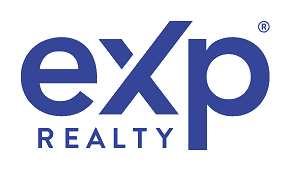Construction-to-permanent loans can be a great way for homebuyers to finance the construction of their home. These loans are designed to help borrowers through the process of building their homes, from start to finish.
Whether you’re looking to buy land for sale in Georgia, or in Texas’ real estate market, we hope you find this information helpful as you learn the ropes of building your own home. Keep reading to learn more about construction-to-permanent loans and whether they’re right for you!
What exactly is a construction-to-permanent loan?
A construction-to-perm loan, or a single-close loan, is a type of loan used to combine the cost of buying land, the cost of building a home, and then later serves as the mortgage for the entire property once construction is completed.
This is an ideal way to secure financing if you’re wanting to buy land and build a custom home on it. Otherwise, you’d have to go through the loan process twice. Once for a construction loan and then again for a permanent mortgage loan. With the construction-to-permanent loan, everything is rolled into one, with the first half going into buying the land and funding the project, and the second half converting the loan into a fixed-rate mortgage loan.
What are the benefits of a construction-to-perm loan?
What’s neat about a single-close loan is that it works like a line of credit. During the construction phase, you can make several draws from the loan to get only what you need for that time. As you require more money to finish the project, you can pull out more money. This is great because you’re only charged interest on the amount of money you’ve pulled out.
For example, say you are pre-approved for $350K. You don’t have to pull all of that money out at once. If you only require $50k to get started on the construction of your house, you can make a draw for that. You’ll only pay interest on the $50k at that point and not the full amount of $350K.
Not only are you only paying interest on the amount you draw, but you will make interest-only payments during the construction of your home. This is capped-off at 18 months, though. If you apply for a different kind of loan, you won’t be afforded this type of flexibility.
As it was mentioned above, you won’t have to apply for two separate loans, which will keep you from spending extra money. To break this down further, you won’t need to apply, get approved, provide paperwork, and pay closing costs for two loans. On top of that, you might be able to get a fixed interest rate up to 18 months in advance, which can protect you from the threat of fluctuating interest rates.
While it may sound like you’re given a line of credit that’s like a debit card without many restrictions, many banks use a system called “draws.” For each phase of the construction you’re allowed to “draw” out a certain amount of money.
Determine if your property is suitable for a construction-to-perm loan
Usually, most lenders require the home you’re building to be your primary or secondary residence. It also can’t be attached-homes like condos, townhomes, or any other multifamily property. It must be a single-family detached house.
One major misconception is that you have to own your lot or tract of land free and clear. The good news is, with this type of loan, you don’t have to. However, it is a major positive if you already have equity in the land you want to build on. The equity can be used towards the down payment and closing costs. Also, it looks good to the lender when they see equity in the land since a construction-to-permanent loan is risky for them.
Which mortgage companies give construction-to-permanent loans?
Most traditional lenders can loan the funds of a construction-to-perm loan, but some specialize in it. When looking around for a lender, you need to ask if they specifically work with this type of loan. If you know the builder you want to use, you can ask them who they recommend. Especially if you’re buying in a newer development, the builder will have a preferred lender they have an established working relationship with.
When searching for a lender, you’ll want to be prepared to share details about your plan, including location, size, and type of home. You will also need to provide the estimated costs to build, plus the price of the land, and the length of payments for your long-term mortgage.
How to qualify for a construction-to-permanent loan
Since there isn’t an asset to secure the loan, the lender holds extra risk and therefore requires more documentation upfront to qualify the borrower than a regular mortgage loan would. The lender will need things like:
Note: They’ll likely need this information for both the borrower and co-borrower (if there is one).
- Employment/Income Information: They will want to know how long you’ve been at your place of employment. Typically they want to see you’ve held the same job or been with the same company for at least 2 years. They’ll also need one month’s worth of most recent pay stubs, W-2s and tax returns for the most recent past two years, and phone numbers to human resources at the place of employment.
- Assets: Most recent bank statements for the past two months for both checking & savings, plus the most recent month of retirement statements like 401(k), stocks, bonds, etc.
- Survey: A recent survey. If you don’t have one yet, a new one will probably need to be ordered. Talk to your lender before doing this, though.
- Builder Information: The executed contract between the borrower and builder, building plans, and construction budget.
- Miscellaneous: Builder’s Risk Insurance agent’s name and phone number, a check or credit card information to cover the appraisal fee, usually around $550-$650, copy of social security card(s), and copy of driver’s license.
- Other fees: 20% of the total amount you’re borrowing for a downpayment, and closing costs (to be determined).
Once the underwriter approves and the loan closes, you’ll be able to start drawing funds to complete your home.
Are there any risks associated with construction-to-permanent loans?
Although a single-close loan is convenient, it comes with a price. Since this type of loan is riskier for the lender, oftentimes they’ll charge a higher fixed interest rate. Typically, this is just during the construction phase, but sometimes this interest rate continues after the loan switches to a permanent loan too. As mentioned above, you’ll likely need to put down 20% of the loan for a down payment. Whereas other loans may require less money upfront. You may also need to pay for separate appraisals for your lot and land too.
Lastly, if your home takes longer to build than projected, you could be charged a penalty fee, and if your loan ends up not covering the entire cost of building your home, you’ll have to pay for the rest out of pocket.
Is a construction-to-permanent loan right for you?
This depends on what you want. If you want a home built to your specific needs and desires, then a construction-to-permanent loan could be the way to go.
If you’re thinking of building a new home or are in the process of doing so, it’s worth considering a construction-to-permanent loan as it can be a great way to finance your home-building project. We hope this article has helped you understand more about these types of construction loans and how they work.
Want to build a home near the beach, has plenty of green space, and has fantastic schools? Check out North Carolina’s capital and why you should relocate to Raleigh.






